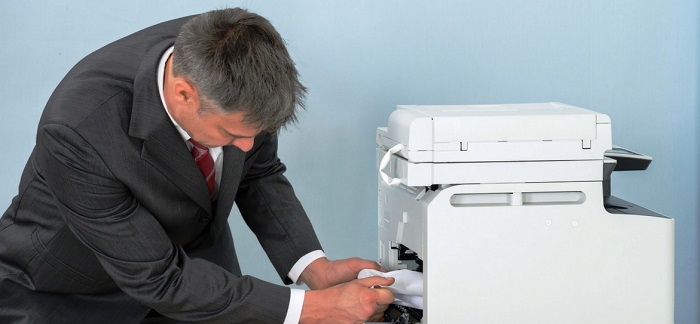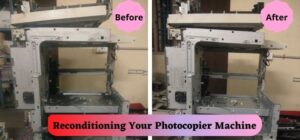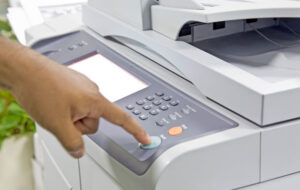If you own or use a photocopier machine frequently, the most common thing you must experience is the paper jam. Most of the time, paper jam occurs due to poorly set up machine. You have to manually remove the paper from the machine before the printing job can continue.
How Does Paper Jam Occur?
In most cases, paper jam occurs due to poor placement of papers in trays, slightly curled and stored in damped environment. In this article, we are going to explore about how to avoid paper jams in photocopier machine.
Curly Paper:
Paper has tendency to bend in one direction, just like a sheet of plywood. Print paper has natural bend called crowning. Open a ream of paper and check for the sag. The side with most sag is the side with paper crown facing up.
It’s recommended to your paper tray to ensure printing is done from crown side. Doing so, we can reduce the curling produced by the photocopier machine. Reducing the paper curl is important because it is major cause of paper jams.
Paper Weight:
Paper weight is mentioned in both grams per square meter (g/m2) and in pounds per 500 sheets – particularly 17” x 22” sized paper. Thus, most of the photocopier machine can withstand weight of both 20 lbs and 75 grams. Higher quality paper might be designated 28 lbs and 105 g/m2.
Because different types of paper use different sized sheet, pound system is not exact metric system for different paper types. It’s recommended to setup paper weight in g/m2. Loading the correct paper weight in the ream reduce the risk of paper jam to greater extent.
Paper Grain:
Another important factor to consider is the paper grain. Just like wood, paper always tears straighter with the grain direction. Tearing those coupons out of the newspaper is best way to know about the paper grain. Just like the newspaper, paper grains runs parallel to longer side.
Generally, paper labelling indicates the grain direction. Knowing about the grain is important because color documents that are folded along the grain have minimal crack along the fold. It results in better, cleaner and more professional looking finished print.
Paper Caliper:
Paper caliper is called as thickness – it depends on the weight and pressure during the manufacturing process. Generally, thick paper is stiffer and rougher than the thin paper. Paper caliber is expressed in microns (millionths of a meter) or mils (thousandths of an inch).
Caliber is another important property because thin paper with low stiffness can wrinkle easily and get jammed. However, thick paper will be rough and cannot bend easily, also result in paper jam.
Moisture Content:
Higher paper moisture content and curling go hand in hand. Paper with higher moisture content is too wet. Then again, if the paper is too dry it may results in static electricity, leads to paper jams and miss-feeds. Ideal moisture content for printing paper is somewhere between 4 to 5 percent.
Because moisture content is important, utmost care is taken while storing the print paper. Using moisture proof wrappers help paper to maintain moisture content. It is recommended to use open reams of paper promptly. .
Keeping above things in mind will help you to reduce paper jams. When you experience a misfeed or paper jam, the most important thing is to relax and clear the jam slowly. When in need, you can get the assistance of professionals. Lakshmi Copier Solutions – leading Xerox machine dealers in Chennai offer professional service when comes to Xerox machine service and maintenance.





